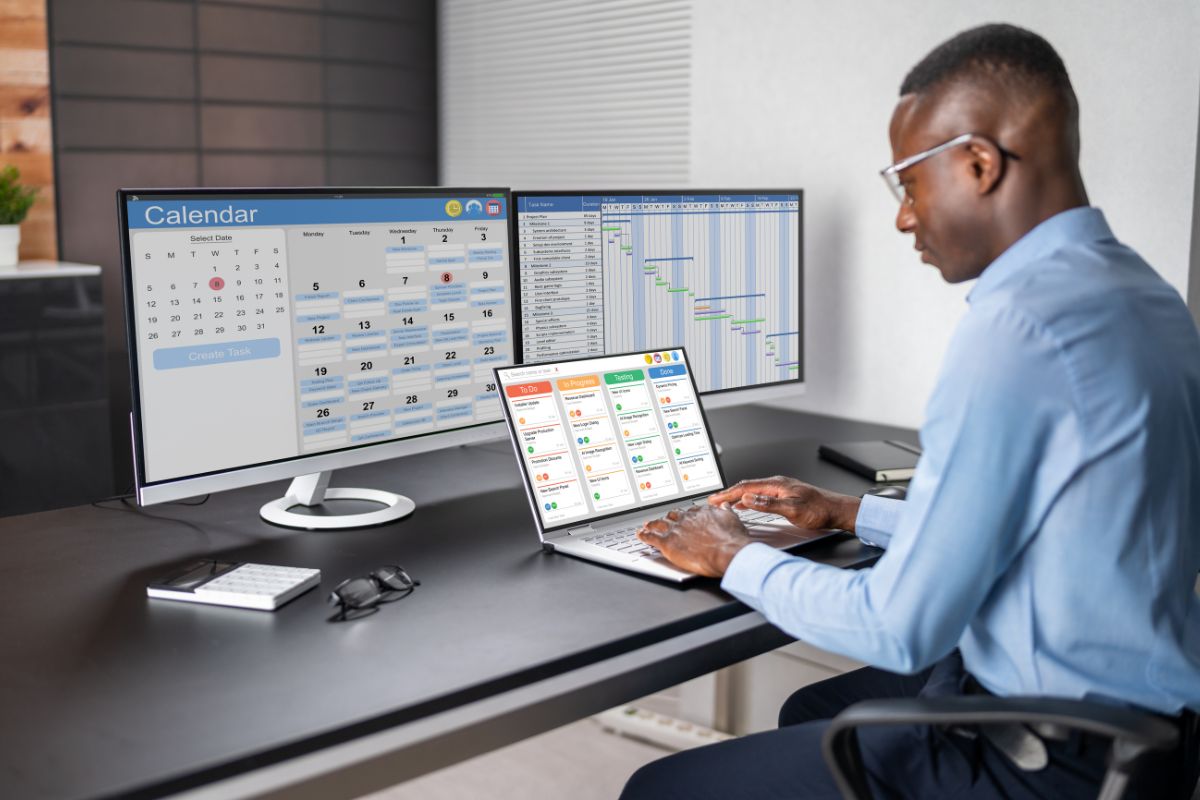Are you struggling to manage your tenants and rental properties effectively? If so, adopting tenant management software could be the game-changer you’ve been searching for. But let’s not deny – that while adopting new software can bring a plethora of benefits, it also brings its unique set of challenges. Having a clear understanding of the issues you might face can help prepare you for a smooth and successful adoption process.
Tenant management software wields the potential to transform your property management venture. Digitizing tasks like rent collection, tenant screening, and maintenance schedules can not only boost your efficiency but also catapult your tenant’s satisfaction. And yet, landlords and property managers often encounter roadblocks on their path to software adoption, ranging from data security concerns to issues with user adoption, integration, and customization.
Asking the Right Questions During Demos
In the complex landscape of property ownership, landlords must juggle a myriad of roles, from overseeing property upkeep to financial administration, tenant engagement, and legal adherence. The emergence of property management software has markedly simplified these duties by offering a unified platform for activities such as collecting rent and managing repair requests. However, the software’s effectiveness depends on its compatibility with the unique requirements and logistical complexities of a landlord’s property holdings. Therefore, landlords must engage in insightful questioning during software demonstrations.
Queries about the software’s scalability can reveal its ability to evolve in tandem with the expansion of a landlord’s real estate portfolio. Probing into the software’s data protection measures can shed light on its aptitude for securing confidential tenant data and financial transactions. Additionally, scrutinizing the software’s reporting features can empower landlords to make informed, data-based decisions, thereby enhancing asset yield.
The art of asking questions goes beyond mere information gathering; it is a vital part of risk assessment. By posing relevant and focused questions during software demos, landlords can gauge the software’s suitability for their specific operational needs. This assessment is not just a procedural step, but a pivotal moment that can have a lasting impact on the effectiveness and profitability of property management activities.
Evaluating Customer Reviews and Testimonials
In today’s complex real estate environment, the role of property management software and other useful landlord tools is crucial. These digital solutions aid landlords in a myriad of responsibilities, from vetting potential tenants to orchestrating property upkeep. The effectiveness of such a tool, however, hinges on its quality and its alignment with the unique demands of property management. As such, it is essential for property owners to rigorously assess customer feedback and user testimonials before committing to a specific software platform.
User reviews offer critical perspectives on various aspects of the software, such as its ease of use, features, and dependability. These assessments act as a reliable measure for understanding how the software performs in practical conditions, as opposed to the often exaggerated promises made in promotional content. Testimonials, meanwhile, furnish detailed accounts of enduring user experiences, revealing any hidden shortcomings or issues that may only become evident over time.
Overlooking these valuable evaluative tools can culminate in the adoption of inadequate property management software, resulting in operational inefficiencies, monetary setbacks, and strained tenant relations. In a sector where the quality of management is of utmost importance, making a well-informed choice based on thorough investigation is not just recommended—it’s a necessity. Hence, property owners should place considerable emphasis on customer reviews and testimonials when making their software selections.
Understand Hidden Costs to Watch Out For
In property investment, the increasing ubiquity of property management software cannot be overstated. While these digital platforms offer a host of benefits, from simplifying rent collection to effective oversight of maintenance tasks, landlords must be vigilant about the less obvious financial commitments they entail.
The upfront cost of acquiring property management software is but a fraction of the total financial commitment. Beyond this initial investment, property owners may find themselves contending with a variety of hidden charges. These can encompass recurring subscription fees, expenses for software enhancements, and add-on features that become essential as the scope of property holdings grows. Additionally, the amalgamation of the software with pre-existing systems may require the acquisition of extra hardware or specialized advisory services, further escalating the overall costs.
Overlooking these concealed expenses can lead to unexpected budgetary shortfalls, undermining the economic viability of property investments. Therefore, landlords are advised to undertake a thorough cost-benefit assessment before integrating any property management software into their operations. This ensures that the selected platform is not only operationally efficient but also fiscally sustainable. In essence, a well-informed understanding of the covert costs linked to property management software is crucial for maintaining the financial stability of real estate investments.
Setting Realistic Expectations for Implementation Time
In the domain of property administration, the adoption of property management software has become essential for enhancing operational efficiency, improving tenant relations, and maximizing financial gains. Nevertheless, landlords must exercise prudence in establishing achievable timelines for the software’s full integration.
The underpinnings for this cautious stance are diverse. Initially, overestimating the rapidity of software deployment can result in operational chaos. The interim period usually entails data transfer, employee orientation, and system validation—each requiring scrupulous attention to avert enduring mistakes. Additionally, inflated timelines can trigger a domino effect of unfulfilled expectations, thereby undermining the confidence of all involved parties. This is especially harmful in an industry where credibility and dependability are key.
Furthermore, the intricacy of property management software is not uniform, and neither is the duration needed for its comprehensive activation. A rushed methodology may bypass vital features, culminating in the software’s inadequate exploitation. This counteracts the primary objective of implementing a technological framework designed for operational superiority.
To summarize, formulating achievable timelines for the integration of property management software is not just an operational requirement but a strategic necessity. It facilitates a smooth transition, sustains the trust of stakeholders, and allows the software to fulfill its role as a valuable instrument in property management.
Identifying Pain Points and Bottlenecks
In today’s competitive real estate environment, the integration of property management software is no longer a luxury but a necessity. This digital solution offers a myriad of features aimed at simplifying tasks such as tenant vetting, rent collection, and facility upkeep. However, for property owners, the mere deployment of such technology is insufficient; it’s imperative to pinpoint both obstacles and chokepoints within the system to fully leverage its capabilities and ensure a satisfactory return on investment.
Recognizing these obstacles enables landlords to customize the software’s features to tackle specific challenges, whether they relate to financial transactions, contractual obligations, or property maintenance. Overlooking these critical issues could result in the underutilization of the software, thereby diminishing its potential advantages. Additionally, chokepoints—areas within the system where the flow of information or tasks is slowed or halted—can drastically undermine operational effectiveness. For example, if the software’s user interface is not user-friendly, it could lead to delays in essential communications and transactions between landlords and tenants.
Property owners can fine-tune the software to align with their distinct needs by diligently spotting and addressing these hindrances and chokepoints. This not only boosts operational effectiveness but also elevates tenant contentment, which in turn fosters long-term financial stability and growth. In essence, the active identification of obstacles and chokepoints is not just a recommended strategy; it is a critical necessity for landlords aiming to excel in the modern real estate market.












